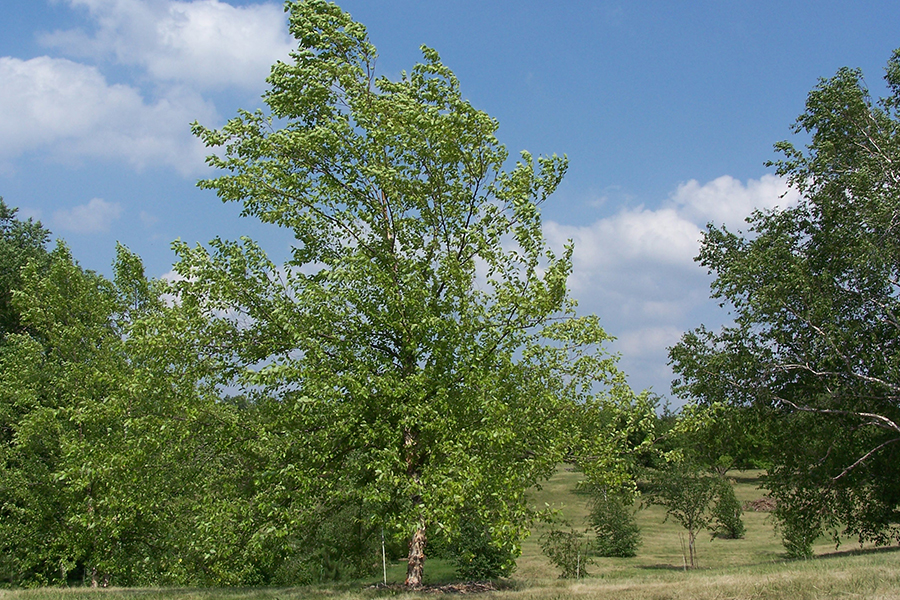Betula nigra
River birch are deciduous trees known for their slender form and beautiful bark when immature. Their hardy nature makes them a popular ornamental choice in urban areas.
Location
You can find two river birches on the Hidden Spring trail on either side of a small foot bridge.


History at Hadwen
There is no direct record of river birches being planted by Hadwen himself but there were four other species of birch recorded in 1882. River birch was present in the Arboretum in the 1970s before disappearing for unknown reasons in the 2020 tree survey. In 2023, two new river briches were planted by students and faculty of Clark University. In his notes, Hadwen wrote, “all birches are graceful trees; they have a graceful sweep and a peculiar flutter in the breeze.”
Keep Learning
Detailed Species Information
River birch, also known as water birch or black birch, is a deciduous tree in the family Betulaceae, native to the eastern United States. Fast-growing and typically multi-stemmed, river birch reaches a height of 60–80 feet (18–24 meters). When young, river birch is characterized by distinctive pale gray or pink paper-like bark with large, peeling scales. As trees mature, this distinctive bark can only be seen near the top of the tree on newer growth. The leaves of the river birch are diamond-like in shape, alternately arranged on the stem, and have large, pointy serrations. In summer, these leaves are light green and turn yellow in the autumn. The flowers are catkins containing small, winged seeds that are water or wind-dispersed.
The river birch is commonly found in moist environments such as floodplains, wetlands, and river sides, as implied by its common name. It is tolerant of excessive water and acid soils but requires full sun. The river birch is an important species for many birds in its native range, particularly waterfowl, which use its cover for nesting sites and seeds as a food source. It also hosts the larvae of over a dozen moth species. Due to its tolerance to flooding, the river birch is often used for erosion control purposes.
The river birch is not typically used in the lumber industry, but its wood is fine-grained and hard, making it suitable for woodworking and fuel. River birch sap was collected and boiled down by indigenous groups to make a syrup similar to maple syrup. In landscaping, the river birch is popular for its multi-stem form and distinctive immature bark, and many cultivars have been developed.
